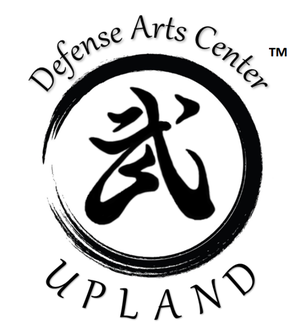I just returned from a training trip to Naha Okinawa, the birthplace of Karate. This was my third trip, and by far the best, but also the most challenging as I was testing for my Yondan in front of Komura Sensei, Sanguinetti Sensei and Kimiya Sensei. I was joined by my wife Leslie along with Dr. Dave Michelson and his father, Arthur. Franco Sanguinetti Sensei, of the Matayoshi Kobudo Kodokan International (MKKI) and Bushikan Karate Dojo hosted the trip. He and his wife, Chrisan Sensei, handled all the logistics of the trip eliminating the stress inherent in international travel. There were 25 people including eight teenagers and one nine-year old (all Sanguinetti Sensei’s students), two sets of parents, and several MKKI Yudansha and Kyu-rank members from Nebraska, Wisconsin and Washington.
Sanguinetti Sensei trained with Matayoshi Sensei in the 1980’s and 1990’s and has maintained relationships with many of Matayoshi Sensei’s remaining students. Despite himself being a Hachidan (8th Dan) in Matayoshi Kobudo, Sanguinetti Sensei makes yearly private trips to Okinawa to continue his training. Because of his dedication and relationships in Okinawa we were fortunate to train with long-time (30+ years) Matayoshi students: Kamura Koshin Sensei; Kimiya Sensei; and Mishime Sensei. We were also visited by long-time Matayoshi students and Okinawan Weapons Dance experts, Hiroko Sensei (who taught at the Matayoshi dojo after his death) and her student, Onaga Sensei. Onaga Sensei demonstrated a traditional dance using the bo that incorporated many of the kata movements we study. Despite being in her 70’s Onaga Sensei’s movements were fluid and dynamic. Much to our surprise and delight, Hiroko Sensei and Onaga Sensei also treated us to a catered lunch on our fourth day training. All these Sensei’s were warm, gracious individuals. I was particularly impressed by the extra effort that Kamura, Kimiya and Mishime Sensei’s gave to the young people who traveled with us.
We were also treated to seminars with master instructors in: Uechi-Ryu by Senaga Yoshitsune Sensei; Shorin-Ryu by Tajima Kazuo Sensei; and Goju-Ryu by Gibo Seiki Sensei. Stepping into the dojos of Senaga Sensei and Gibo Sensei was an experience. Both dojos are part of their homes and located in the outer residential districts of Naha. Both dojos were filled with martial arts history and it was a real treat to see historical photos, newspaper clippings and certificates from many years ago. It was truly an honor to train on the wood floors where so many karateka have sweated.
Senaga Sensei’s Uechi Ryu Dojo
Gibo Sensei’s Goju Ryu Dojo
As you know, I had trained hard the last few months to prepare for my test. In the two weeks prior to leaving, I trained two hours daily. My goal was to perform without thought. It was this training that pulled me through as I spent the day before the test in bed with flu-like symptoms. On the day of the test I managed to push through the morning training, but only barely. The morning heat and humidity pushed me close to the breaking point. However, I was determined to test in the afternoon.
As I was called up for the first kata my training kicked in and the flu no longer mattered. I am told that my performance was very strong; unfortunately, I really could not remember much and had to later ask Dr. Dave which weapons/katas I had done. Two days later I was awarded my Yondan in Matayoshi Kobudo Kodokan. It is an honor that I will always cherish.
Some people may wonder why we would go to the expense to travel and train in Okinawa; after all, the people who truly taught me the martial arts, Aponte Sensei (Empty hand and Kobudo), Sanguinetti Sensei (Empty hand and Matayoshi Kobudo Kodokan), and Richmond Sensei (Iaido) are all westerners and local. Also, Shotokan, the empty hand art I study, is not represented in Okinawa. Well, everyone has his own reasons but to me it starts with being able to experience a different culture and its history in a friendly country. My wife explored the Naha area by herself and never once felt uncomfortable. Next, by visiting the historical sites and old dojos I gained a better understanding of how and why the art evolved. Training in different styles with masters whose focus is on the original intent of self-defense, as opposed to competition, provided me with a better understanding of the techniques hidden in our Shotokan katas. This quest for understanding has become more acceptable in Shotokan as exemplified by JKA instructor, Tatsuya Naka who has published his “Great Journey” to Okinawa to return to the roots of Shotokan Karate.
As master Kenwa Mabuni (founder Shito-ryu) said, “The karate that has been introduced to Tokyo is actually just a part of the whole. The fact that those who have learnt karate there feel it only consists of kicks & punches, and that throws & locks are only to be found in judo or jujutsu, can only be put down to a lack of understanding … Those who are thinking of the future of karate should have an open mind and strive to study the complete art”. Traveling to Okinawa has helped me complete my art.
Sanguinetti Sensei is now hosting yearly trips to Okinawa for those that are willing to work hard and abide by the spirit of Budo throughout the trip. It is an experience I highly recommend.
- Bob Johnson




















